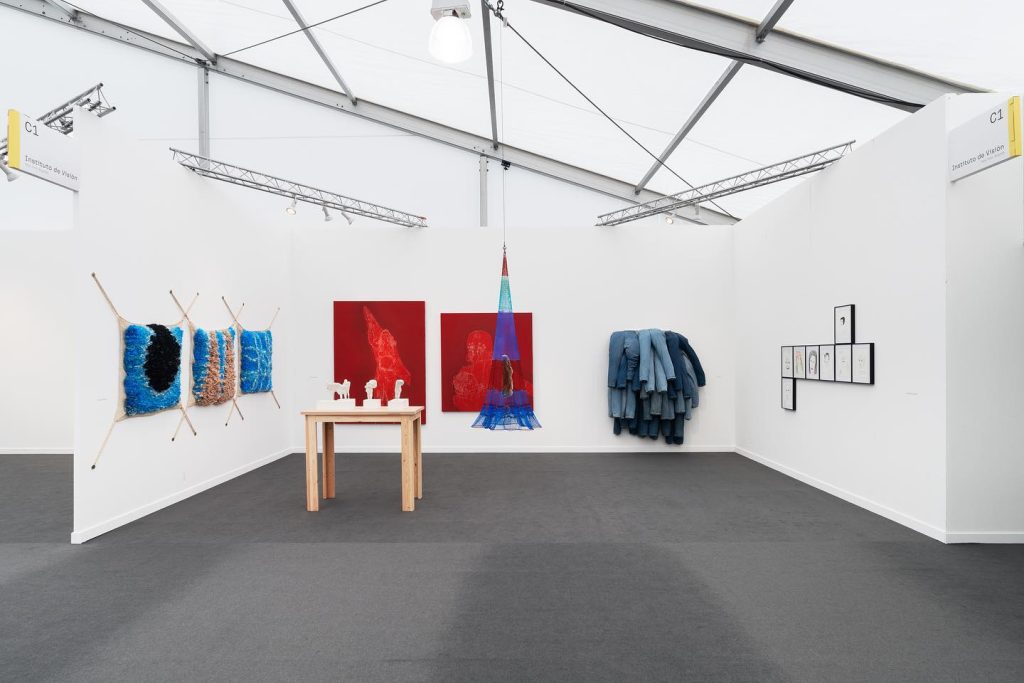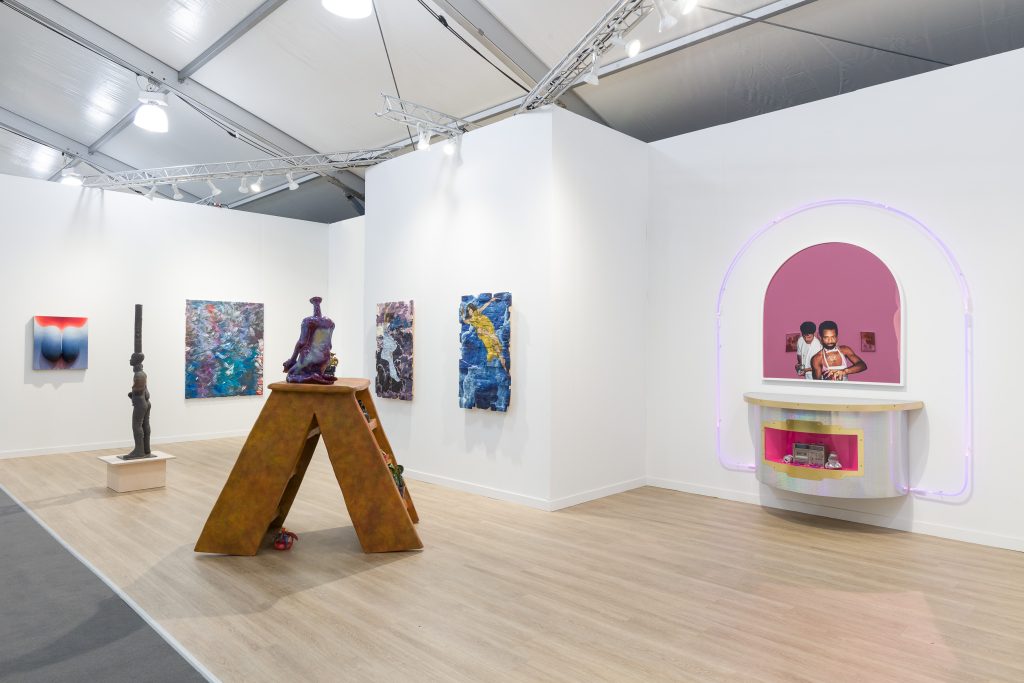Frieze LA 2023: Depictions of Women by Women Artists
Varied figurative representations by an array of international artists

Each year in February excitement builds as the focus of the art world turns toward Los Angeles for the Frieze Art Fair. This year a local air hangar might have seemed like a surprising location for an art fair, but through the years the Santa Monica Airport has hosted the Los Angeles Festival, Unique LA, art events and countless cultural happenings. Frieze filled Barker Air Hangar with three dozen galleries and activations, while the east side Frieze tent expanded the footprint to be the largest in LA so far.
By the entrance the Regarding Her food offerings celebrated women-owned culinary companies in Los Angeles. Maestro Dobel decked out their flower-filled “Artpothecary” with a collaboration with Clásicos Mexicanos, celebrating 20th century design in Mexico. Entering the Frieze tent revealed a cacophony of sensory stimulation with filmmakers mingling with gallerists and art collectors. Renowned local artists like Catherine Opie and Christina Quarles could be seen walking around to experience Frieze alongside that exuberant crowd. The sheer amount of art to absorb was monumental, but in the midst of a dizzying array of exhibitions, these colorful eye-catching works from artists around the globe told emotional stories of domestic life and heroic journeys.

Hana Ward at OCHI Gallery
A solo installation of paintings and ceramic works by LA-based artist Hana Ward were presented by OCHI Gallery. Influenced by anti-colonial histories and spiritual texts, Ward paints women in vibrant mythic landscapes and scenes of domestic life. She sets some of her female figures at the forefront while others are looking out from behind curving tree branches. Completing the space: three ceramic heads topped with a piece of fruit, a bowl and a lightbulb appear to be looking out from the landscape.

Hilda Palafox at Proyectos Monclova
Mexican artist Hilda Palafox has painted murals in Mexico, the United States, Canada, Japan and Brazil. At Frieze, Proyectos Monclova, a gallery in the Polanco neighborhood of Mexico City, brought a solo presentation of her paintings depicting a range of powerful women. The women in Palafox’s paintings take up space. The colors—bold golds and ochre—are revealed in light and shadow. In “Soñé con fuego y serpientes,” she paints one woman holding a burning book that releases clouds like smoke into the sky while another gently cradles a thin neon yellow snake. Faces in Palafox’s work take on a mythical quality with sculptural lines and expressions that leave the emotions open to interpretation.

Tania Candiani at Instituto de Visión Bogotá
In the group exhibition from Instituto de Visión, a gallery based in the San Felipe neighborhood in Bogotá, Tania Candiani‘s bold red canvases command attention. Candiani, who lives and works in Mexico City, amplifies the bodies in these works by layering on sewing and embroidery elements. She has depicted women revolutionaries at protests and often creates site-specific art to delve into socio-historical connections. This interdisciplinary artist explores the intersections between art, literature, music, science and architecture.

Andrea Bowers at Jessica Silverman
The Jessica Silverman Gallery, housed in the Chinatown neighborhood of San Francisco, brought together a range of mediums in their Frieze presentation. Andrea Bowers, who is originally from Ohio but based in LA, paints her heroines on found and recycled cardboard. This series of paintings depicts powerful women soaring through violet and blue stormy skies. Bowers has been working with collaged recycled cardboard, evocative of the protest posters that she felt drawn to at Occupy Wall Street.

Kyoko Idetsu at Nonaka-Hill
The solo presentation of Kyoko Idetsu by Nonaka-Hill tells stories of daily domestic life. Tokyo-based Idetsu paints images of people cooking, partaking in family meals and children playing. In a diptych, there is a woman surrounded by plates of food and chopsticks next to another canvas with a woman painting with a bowl of food floating in front of her. A purple arrow connects them and both appear to be submerged in water. These scenes reveal how Idetsu interprets everyday tasks, emotions and relationships.
Hero image courtesy of Proyectos Monclova












